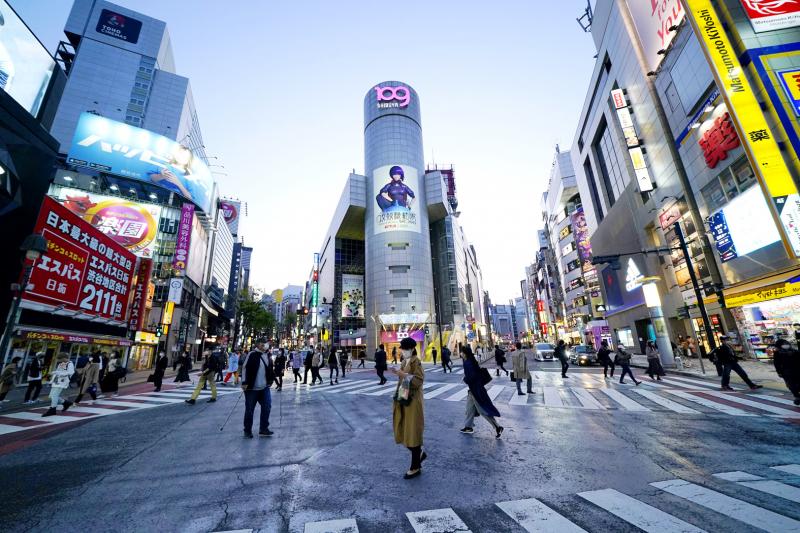It is a scene repeated the world over: pedestrians glued to their phones while walking, causing collisions and sometimes accidents. No more, says one Japanese city.
Officials in Yamato city, near Tokyo, on Monday submitted a bill to the city assembly to stop people from using their phones while walking.
“The number of people using smartphones has rapidly increased and so have the number of accidents” in the densely populated area, city official Masaaki Yasumi said.

Photo: Bloomberg
“We want to prevent that,” he said, adding if passed it would be the first such ban in Japan.
But Yasumi said there will be no punishment for those unable to tear themselves away from their screens in the street.
“We hope the ban will raise more awareness about the dangers,” he said. Posters and messages will inform citizens of the rule, expected to take effect from next month.
In 2014, research by Japanese mobile giant NTT Docomo estimated a pedestrian’s average field of vision while staring down at a smartphone is five percent of what our eyes take in normally.
The company ran a computer simulation of what would occur if 1,500 people used the hectic Shibuya pedestrian crossing in Tokyo while all looking at their smartphones.
The results showed that two-thirds would not make it to the other side without incident, with 446 collisions, 103 people being knocked down and 21 dropping their phones.
The number of accidents between people using phones while riding a bicycle and pedestrians is also increasing in Japan.
In some cases, victims’ families demand up to ¥100 million (US$1 million) in compensation.

June 9 to June 15 A photo of two men riding trendy high-wheel Penny-Farthing bicycles past a Qing Dynasty gate aptly captures the essence of Taipei in 1897 — a newly colonized city on the cusp of great change. The Japanese began making significant modifications to the cityscape in 1899, tearing down Qing-era structures, widening boulevards and installing Western-style infrastructure and buildings. The photographer, Minosuke Imamura, only spent a year in Taiwan as a cartographer for the governor-general’s office, but he left behind a treasure trove of 130 images showing life at the onset of Japanese rule, spanning July 1897 to

In an interview posted online by United Daily News (UDN) on May 26, current Chinese Nationalist Party (KMT) Chairman Eric Chu (朱立倫) was asked about Taichung Mayor Lu Shiow-yen (盧秀燕) replacing him as party chair. Though not yet officially running, by the customs of Taiwan politics, Lu has been signalling she is both running for party chair and to be the party’s 2028 presidential candidate. She told an international media outlet that she was considering a run. She also gave a speech in Keelung on national priorities and foreign affairs. For details, see the May 23 edition of this column,

The Taiwan People’s Party (TPP) on May 18 held a rally in Taichung to mark the anniversary of President William Lai’s (賴清德) inauguration on May 20. The title of the rally could be loosely translated to “May 18 recall fraudulent goods” (518退貨ㄌㄨㄚˋ!). Unlike in English, where the terms are the same, “recall” (退貨) in this context refers to product recalls due to damaged, defective or fraudulent merchandise, not the political recalls (罷免) currently dominating the headlines. I attended the rally to determine if the impression was correct that the TPP under party Chairman Huang Kuo-Chang (黃國昌) had little of a

At Computex 2025, Nvidia CEO Jensen Huang (黃仁勳) urged the government to subsidize AI. “All schools in Taiwan must integrate AI into their curricula,” he declared. A few months earlier, he said, “If I were a student today, I’d immediately start using tools like ChatGPT, Gemini Pro and Grok to learn, write and accelerate my thinking.” Huang sees the AI-bullet train leaving the station. And as one of its drivers, he’s worried about youth not getting on board — bad for their careers, and bad for his workforce. As a semiconductor supply-chain powerhouse and AI hub wannabe, Taiwan is seeing